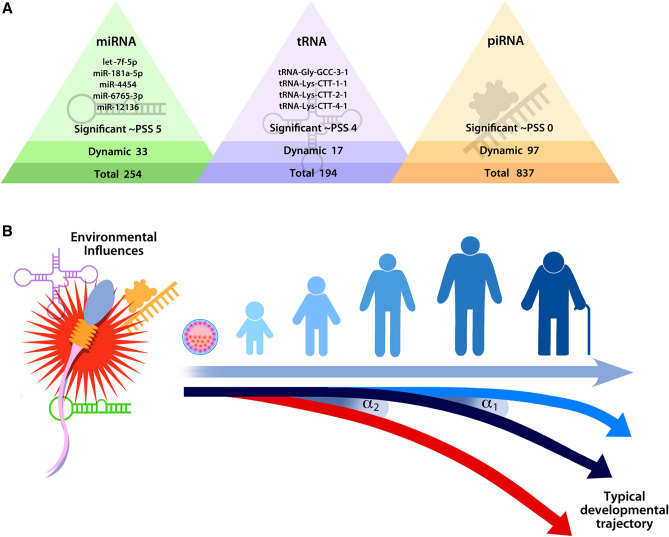Figure 3.
Individual ‘dynamic’ sperm miRNA and tRNA, but not piRNA, are significantly correlated with perceived stress experience, potentially acting to influence the earliest stages of development to shape long-term health outcomes. (A) Summary of analysis results, including the class-specific numbers of consistently expressed (total) and ‘dynamic’ sperm sncRNA, and the number of ‘dynamic’ sncRNA with statistically significant associations with perceived stress experience. (B) Theoretical model linking a chain of events beginning with an environmental experience or exposure, including stress, impacting sperm sncRNA levels. Acting individually or interacting together as part of a broader sncRNA code, these ‘dynamic’ sncRNA are able to transmit the encoded information regarding the paternal environment to offspring, potentially impacting developmental processes (e.g., rates of fertility, embryo division and implantation). Even if the initial impact of these ‘dynamic’ sperm sncRNA was small (indicated by ⍺1 or ⍺2), consequent shifts in the timing of developmental windows of susceptibility to additional events could produce significant differences over time, either in positive (resilience, indicated in blue) or negative (risk, indicated in red) directions when compared to a typical developmental trajectory (as indicated in black).
Illustrations by Tim Phelps © 2020 JHU AAM.

